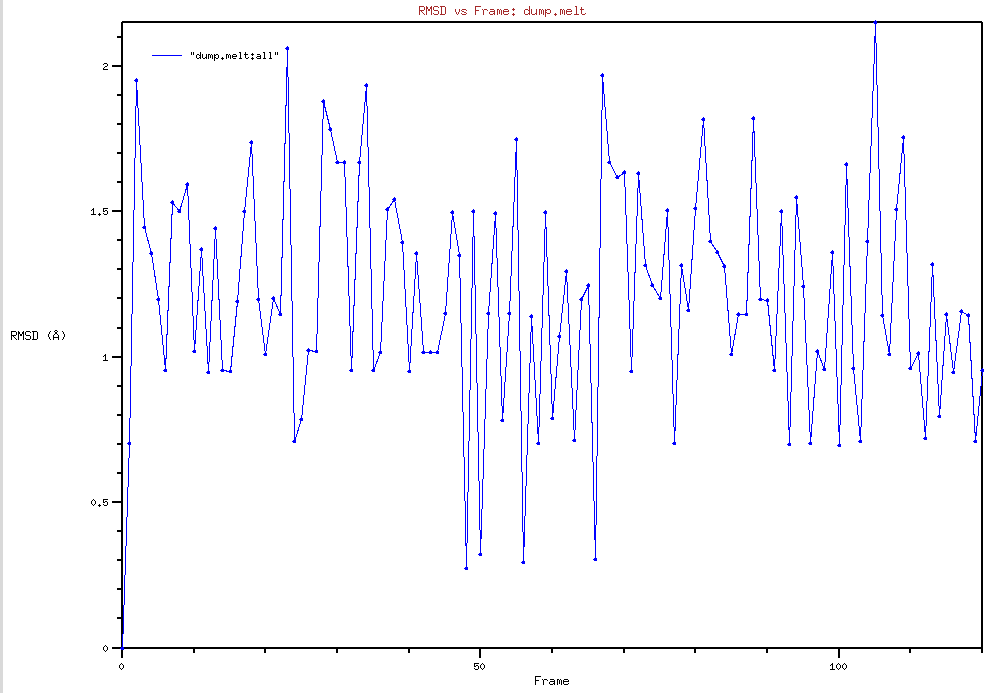Hi Axel,
Yes I know that MSD =! RMSD. Still the slope from MSD does not give me a value that makes sense.
Yes I know that system is argon. But I want to calculate diffusion coefficient after the effect of using ATC so i wanted to see if the process works
Yes I visualized the system. No Its not liquid yes but the atoms are moving. It should be liquid above 1700 K
I have attached my file here.
#Making Melt Fe3c Modeled after in.elastic and Melt File made by Carlos Ruestes
units metal
atom_style full
boundary p p p
neighbor 0.3 bin
neigh_modify every 20 delay 0 check no
read_data data.Fe3C.xtal.3x3x3
change_box all triclinic
pair_style meam/c
pair_coeff * * Fe3C_library_Liyanage_2014.meam Fe C Fe3C_Liyanage_2014.meam Fe C
Define minimization parameters
variable etol equal 1.0e-3
variable ftol equal 1.0e-10
variable maxiter equal 100
variable maxeval equal 1000
variable dmax equal 1.0e-2
Define MD parameters
variable nevery equal 10 # sampling interval
variable nrepeat equal 10 # number of samples
variable nfreq equal {nevery}*{nrepeat} # length of one average
variable nthermo equal {nfreq} # interval for thermo output
variable nequil equal 10*{nthermo} # length of equilibration run
variable nrun equal 3*${nthermo} # length of equilibrated run
variable inittemp equal 1200.0 # temperature of initial sample
variable hightemp equal 1200.0 # temperature of above melting sample
variable timestep equal 0.001 # timestep
variable mass1 equal 28.06 # mass
variable adiabatic equal 0 # adiabatic (1) or isothermal (2)
variable tdamp equal 0.01 # time constant for thermostat
variable seed equal 123457 # seed for thermostat
variable tdamp equal “v_timestep10" # May require some systematic tests for proper adjustment
variable pdamp equal "v_timestep100” # May require some systematic tests for proper adjustment
Setup minimization style
min_style cg
min_modify dmax ${dmax} line quadratic
thermo 100
thermo_style custom step temp vol press ke pe etotal
Compute initial state
fix 3 all box/relax aniso 0.0
minimize {etol} {ftol} {maxiter} {maxeval}
velocity all create {inittemp} {seed} rot yes dist gaussian
dump id all atom 500 dump.melt5
reset_timestep 0
fix equilibration all npt temp {inittemp} {hightemp} {tdamp} iso 0 0 {pdamp}
run 2000000
#fix equilibration all npt temp {hightemp} {inittemp} {tdamp} iso 0 0 {pdamp}
#run 20000
#fix equilibration all npt temp {inittemp} {inittemp} {tdamp} iso 0 0 {pdamp}
#run 20000
write_data data.meltFe3C.* # data file for restarts
print “all DONE”
write_restart meltFe3c.r
